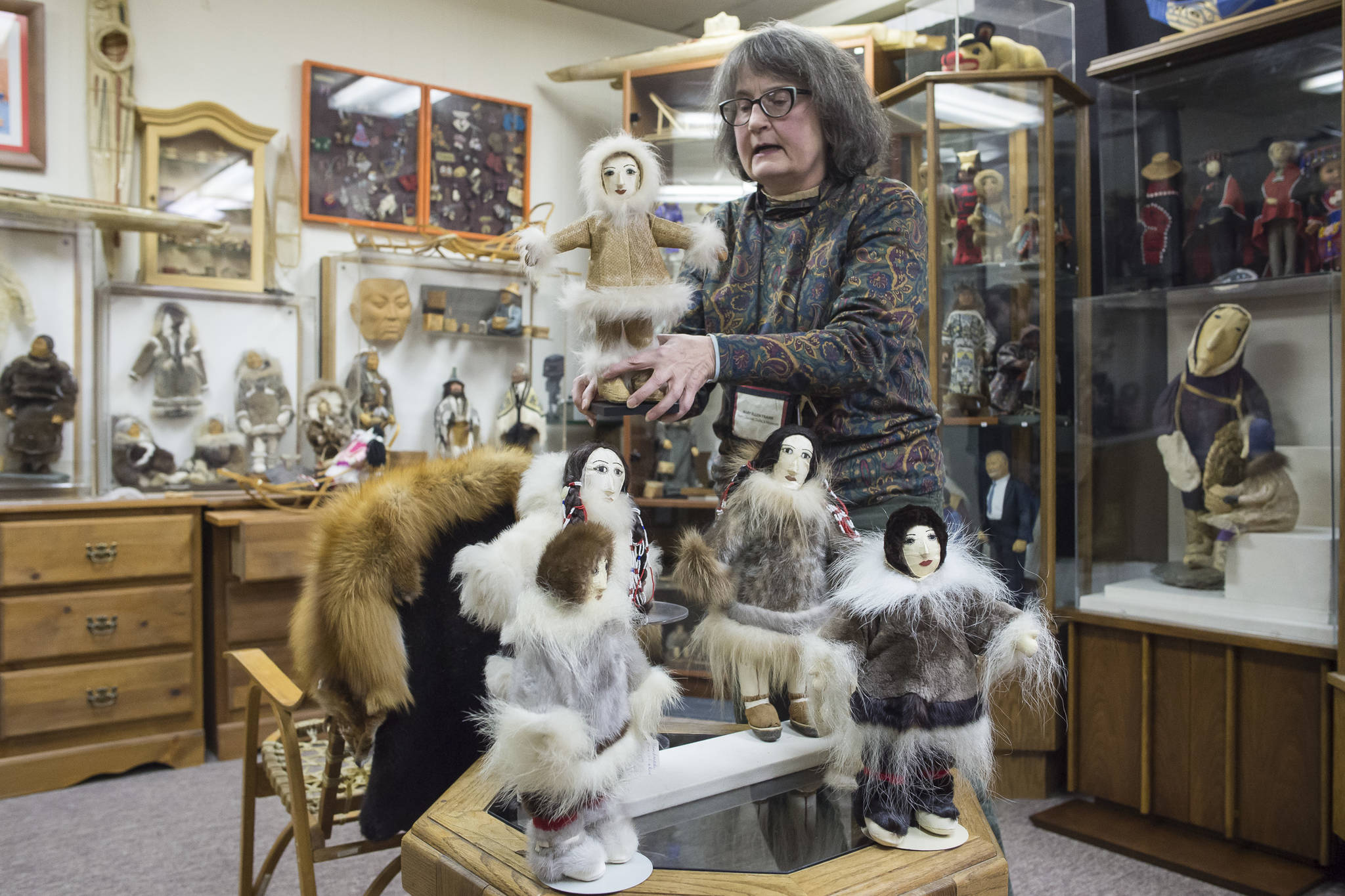From a distance the dolls’ faces looked blankly pleasant.
But closer inspection revealed painstaking work that created a nose’s bridge and the individual stitches that made up each eyelash that make Anacoma Slwooko’s work remarkable.
“This is real stitchery,” said Mary Ellen Frank, director for Aunt Claudia’s Doll Museum and also a doll artist. “You just don’t see real fine stitching on handmade dolls.”
Work by Slwooko, a late Native Alaska doll maker from St. Lawrence Island, was featured at the museum on the second floor of the Triangle Building for First Friday. Five dolls with red lips and fur-rimmed jackets were in the center of the doll museum’s first room to greet any curious attendees.
“She really made some wonderful pieces,” Frank said.
Frank said the dolls are a rarity because their owners often didn’t take particularly good care of them or store them in appropriate conditions.
Some of the dolls that were on display were Frank’s, and her expertise is why they’re still in great shape.
“I met her (Slwooko) and knew about her work,” Frank said. “When I noticed her work was available I tried to buy it or point it out to people who want to spend money on me.”
Slwooko’s work, Frank said, dates back to the ’40s or maybe the ’30s and continued for decades.
“They started with the tourist trade, so they’re not really early,” Frank said.
[Gingerbread contest raises money for nonprofits]
The dolls were influenced by Slwooko’s proximity to Siberia and her Siberian Yup’ik relatives, who Frank said, provided her with some of the patterns used in the dolls.
Materials used to make the dolls included seal and salmon skin as well as polar bear fur. Creation of the dolls incorporated sewing, embroidery and painting among other techniques.
Every feature on the doll’s face required purposeful stitches and careful assembly, Frank said. So while they were made with tourists in mind they were not the sort of thing that could be quickly mass produced.
“They do take a really longtime,” Frank said.
Slwooko’s work will be featured at the museum throughout the month of January, Frank said.
In that time, Frank hopes to accrue more biographical information about the deceased artist to provide to visitors to the museum.
“I’m working with the family to gather more information throughout the month,” Frank said.
• Contact arts and culture reporter Ben Hohenstatt at (907)523-2243 or bhohenstatt@juneauempire.com.

